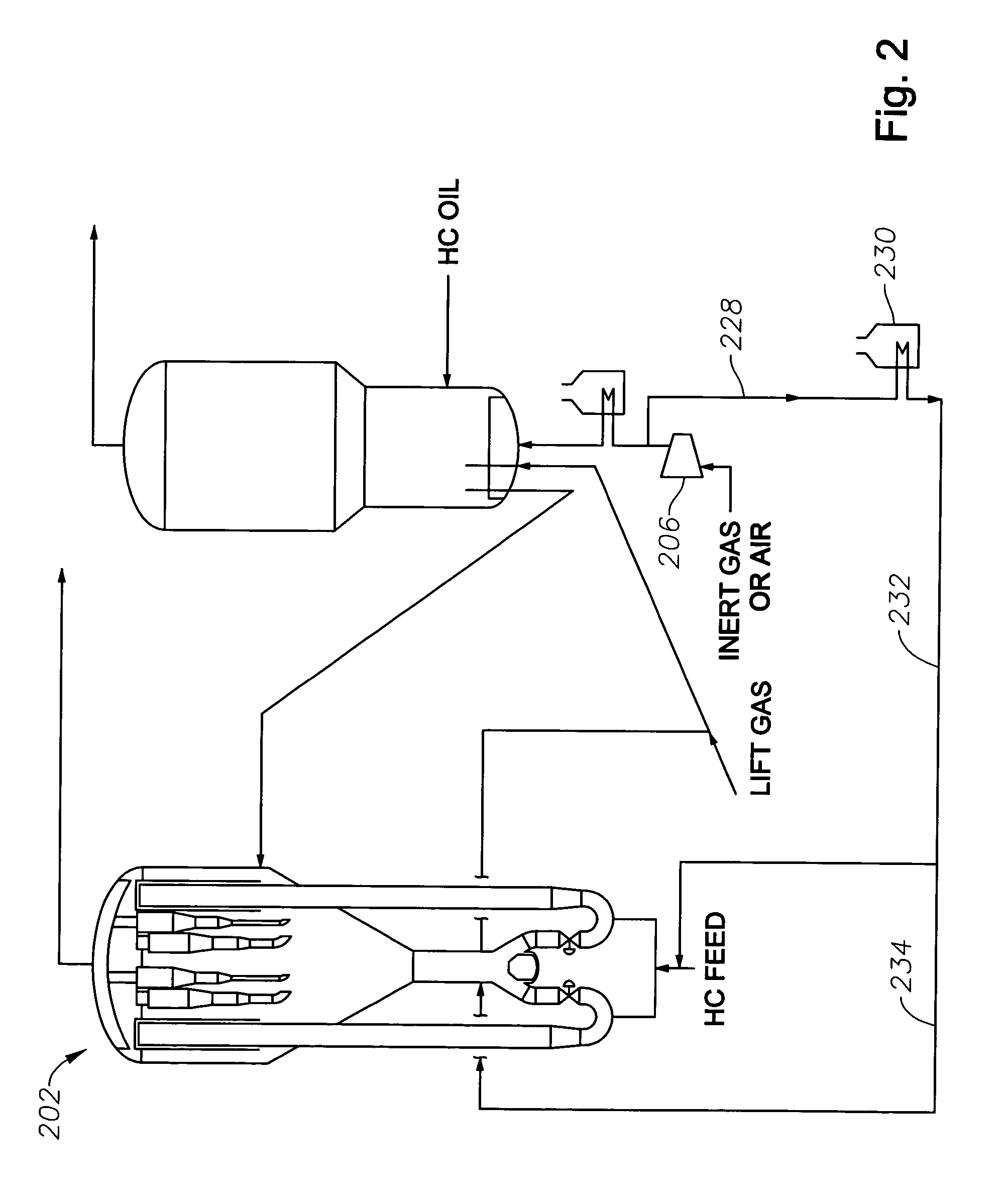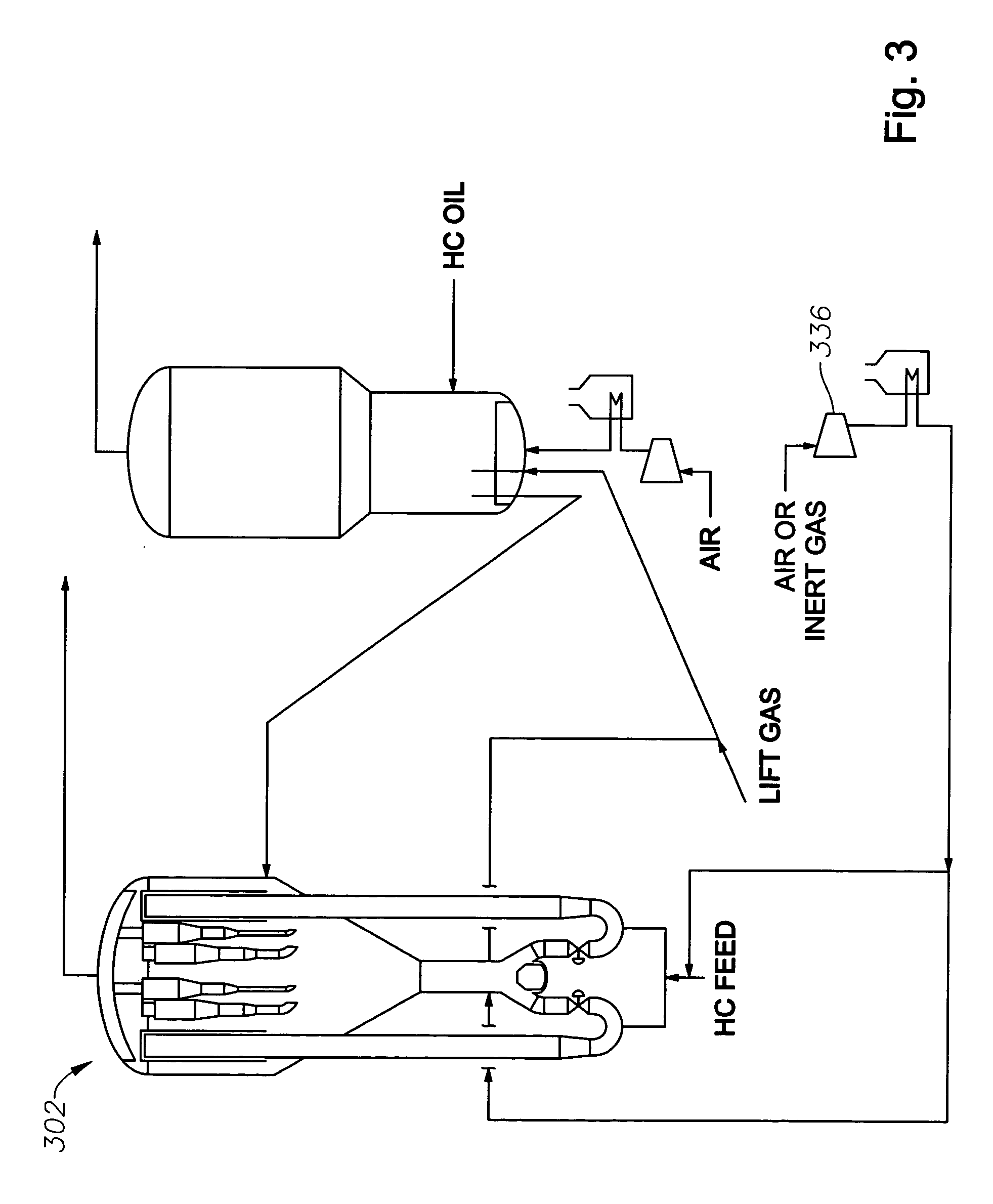Method of starting up a reaction system
a reaction system and reaction technology, applied in the direction of hydrocarbon oil treatment products, hydrocarbon by saturated bond conversion, organic chemistry, etc., can solve the problems of limited methods of protecting activated metalloaluminophosphate molecular sieves from the harmful effects of moisture, the difficulty of protecting activated molecular sieves from loss of catalytic activity as a result of contact with moisture, and the sieve would be of essentially no commercial valu
- Summary
- Abstract
- Description
- Claims
- Application Information
AI Technical Summary
Benefits of technology
Problems solved by technology
Method used
Image
Examples
example 1
A. Example 1
One example of starting up a system containing molecular sieve catalyst that is susceptible to deactivation due to contact with water molecules is described in accordance with FIG. 1, which is a flow diagram of a reaction system, containing a reactor 102 and a regenerator 104. The flow diagram of FIG. 1 is particularly directed to a system for converting oxygenates to olefins, although it is particularly relevant to any system which incorporates a reactor and regenerator. According to the embodiment shown in FIG. 1, the regenerator 104 is heated by injecting hot air. Air is input to the regenerator 104 by sending the air through a compressor 106, through a conduit 108, to a heater or a burner 110, and into the regenerator 104 by way of a conduit 112. The regenerator 104 is heated for 8 hours at 400° F. (204° C.) at which time refractory in the regenerator 104 will be substantially dry.
While the regenerator 104 is being heated, the reactor 102 is also heated by injecti...
example 2
B. Example 2
Another example of starting up a reaction system containing molecular sieve catalyst that is susceptible to deactivation due to contact with water molecules is described in accordance with FIG. 2, which is a flow diagram of a reaction system as shown in FIG. 1. According to FIG. 2, the heat up procedure is the same as that in Example 1, except that relatively dry gas is used to heat reactor 202 rather than steam. According to FIG. 2, a portion the air sent through air compressor 206 is sent through a conduit 228 to dry out heater 230 to heat the air to the appropriate temperatures as stated in Example 1. As a result of increasing the temperature of the air, the air is at a low relative water pressure, and is considered substantially dry. This dry air is sent to the reactor 202 by way of conduits 232 and 234, and the start up procedure of Example 1 is followed.
example 3
C. Example 3
Another example of starting up a reaction system containing molecular sieve catalyst that is susceptible to deactivation due to contact with water molecules is described in accordance with FIG. 3, which is a flow diagram of a reaction system as shown in FIG. 2. According to FIG. 3, the heat up procedure is the same as that in Example 2, except that air or gas from another source is sent to a separate compressor 336, before being heated and sent to reactor 302. All other aspects of the start up procedure pertaining to FIG. 3 are the same as in Example 2.
PUM
| Property | Measurement | Unit |
|---|---|---|
| temperature | aaaaa | aaaaa |
| temperature | aaaaa | aaaaa |
| temperature | aaaaa | aaaaa |
Abstract
Description
Claims
Application Information
 Login to View More
Login to View More - R&D
- Intellectual Property
- Life Sciences
- Materials
- Tech Scout
- Unparalleled Data Quality
- Higher Quality Content
- 60% Fewer Hallucinations
Browse by: Latest US Patents, China's latest patents, Technical Efficacy Thesaurus, Application Domain, Technology Topic, Popular Technical Reports.
© 2025 PatSnap. All rights reserved.Legal|Privacy policy|Modern Slavery Act Transparency Statement|Sitemap|About US| Contact US: help@patsnap.com



